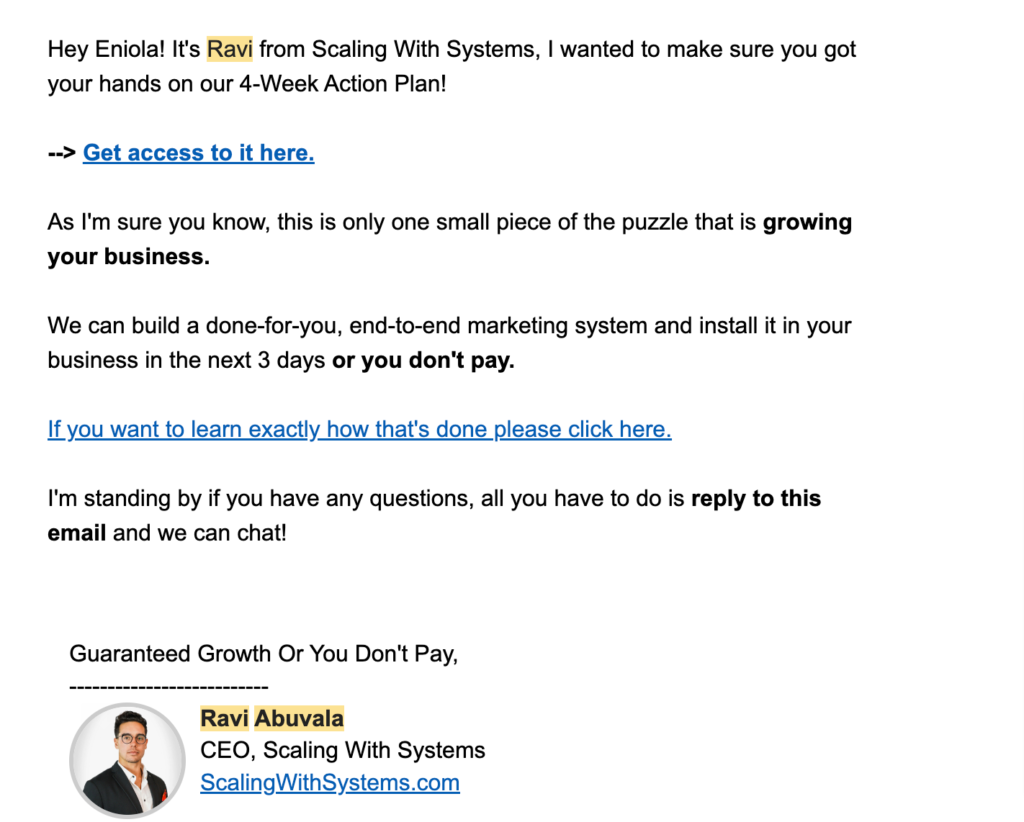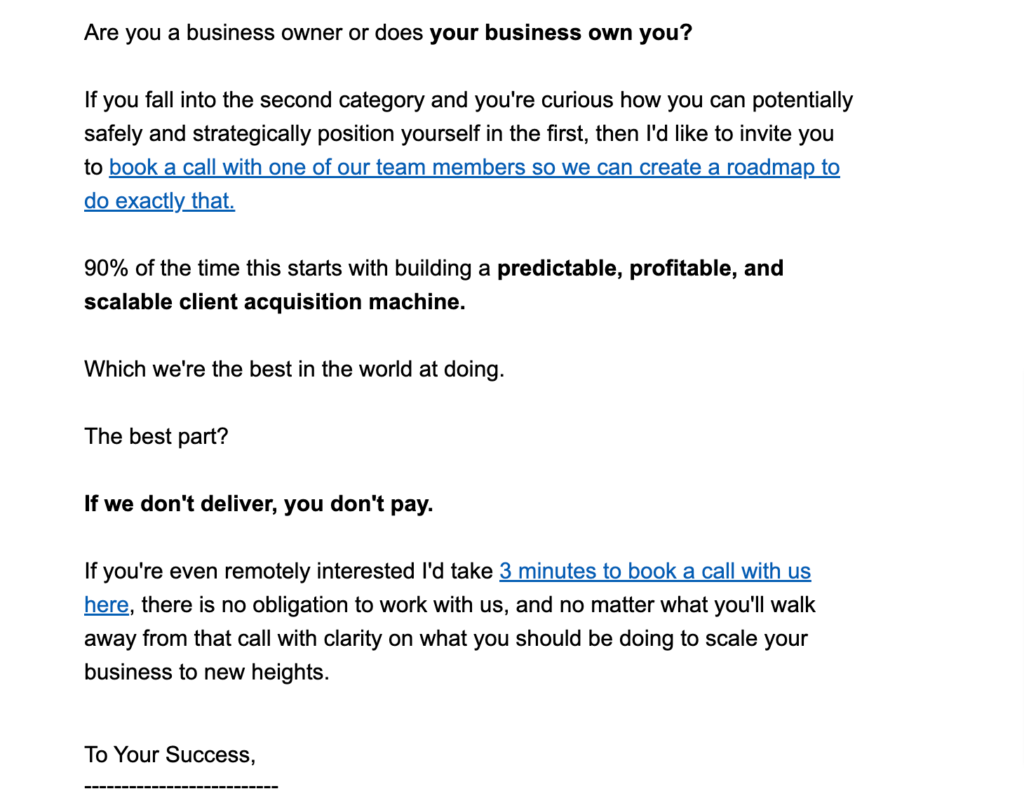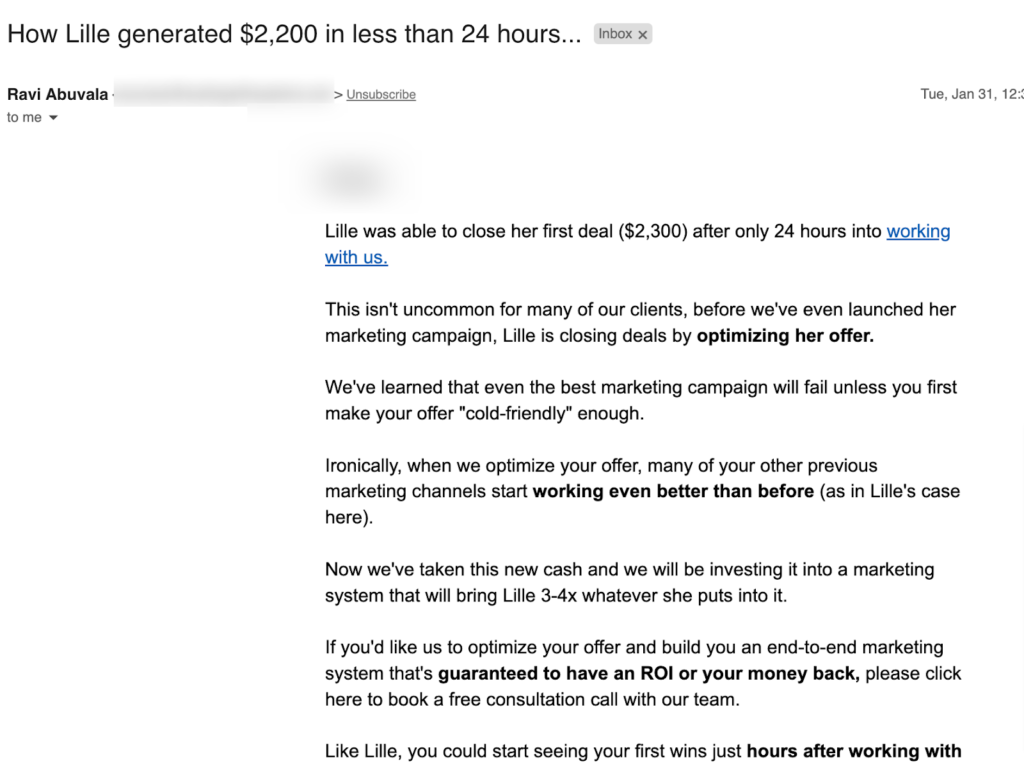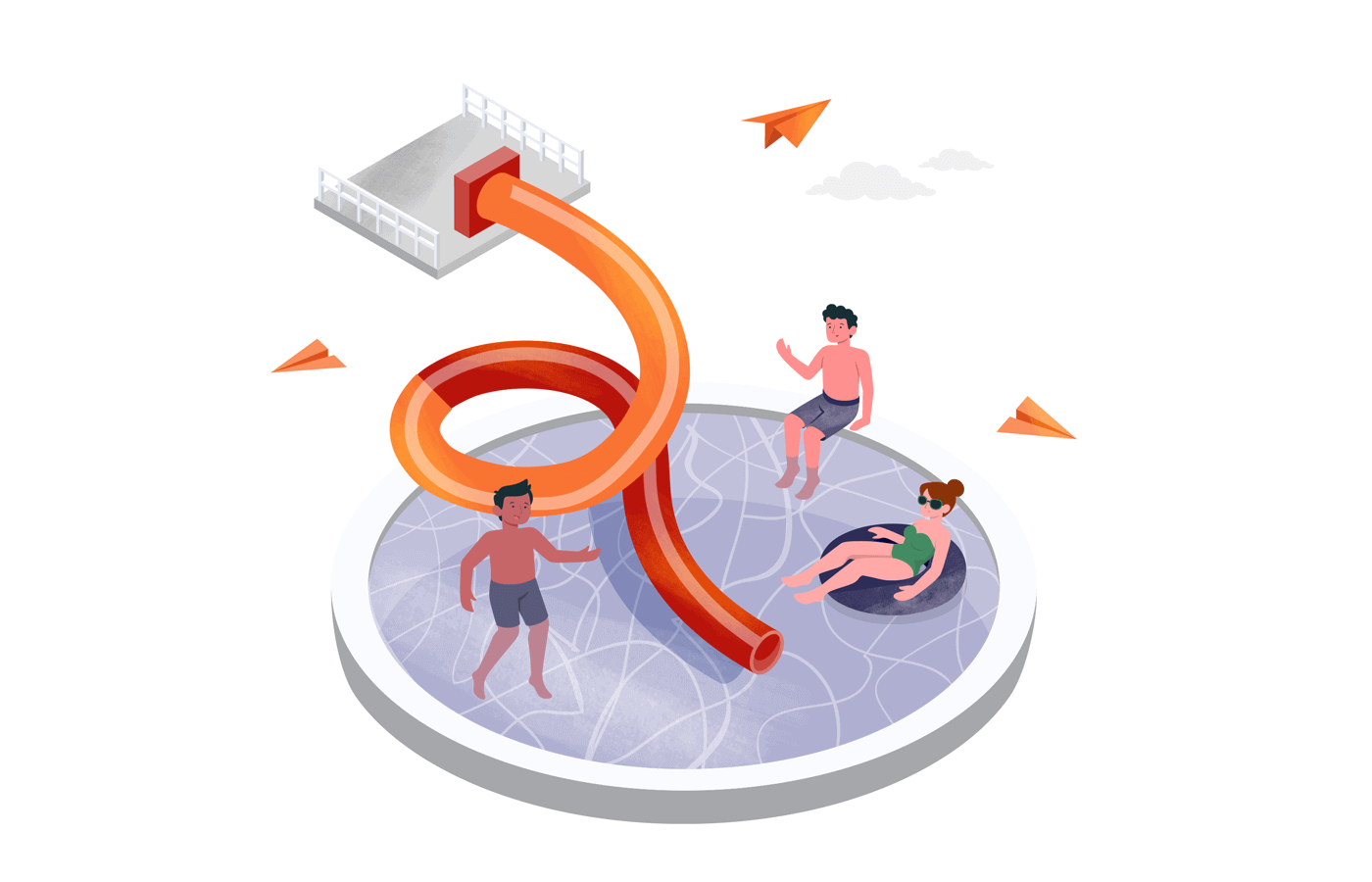Don’t let the jargon “email marketing funnel” scare you away.
Building an email marketing funnel is not hard as it sounds.
Whether you run an e-commerce store, affiliate site, coaching business, or a B2B company, the process is the same.
In this article, we’ll discuss how to build an email marketing funnel with examples you can relate to.
But first, let’s define the jargon.
What is an Email Marketing Funnel?
An email marketing funnel refers to the process prospects go through to become customers.
A typical email funnel contains several automated email sequences to convince and convert visitors to customers.

If you’ve ever signed up for a freebie, you’ve also been in people’s email funnels.
From the moment you sign up for the email list, you begin to receive automated emails from the company, such as welcome emails, educational emails, and sales pitches.
A typical email funnel can be divided into four stages – awareness, interest, consideration, and conversion.
The awareness stage is the top of the funnel, and the goal here is to get prospects into your email list. You can do this through various lead generation funnel tactics, like offering freebies.
The goal at the interest stage is to warm up your leads and get them interested in what you have to offer. You can do this through a series of educational emails.
At the consideration stage, your mission is to remove all obstacles that prospects might have and help them through the sales journey. You can do this through case studies.
Finally, at the conversion stage, you pitch your offer to the qualified leads and urge them to take action.
Benefits of Email Marketing Funnel
An email marketing funnel helps you automate the communication between you and your prospects, and it works 24/7.
So without any push from you, your email funnel can automatically send important emails to your prospects’ inboxes.
Here are other benefits of building one for your business.
Simplifies the Customer Journey
An email funnel helps you set up the email sequences your customers will receive as they journey with you, from start to end.
Also, many email marketing services come with email automation that help you identify the right prospect at the right time in your customer journey. It can monitor prospects’ behavior and follow up with the necessary emails.
For example, a customer may browse an eCommerce website but not make a purchase. An automated trigger email can recognize this activity and send a follow-up email with a customized offer or discount, enticing the buyer to return and complete their purchase.
Allows for Personalization in Email Marketing
One of the benefits of having an email funnel is the luxury of personalizing your emails.
Depending on your email automation software, you can personalize nearly every element of your email (subject lines, intro, outro, and body).
For example, you can start your email with “Hello {first name}.”
Personalization gives prospects a tailored experience and can boost the click-through rate by 41%.
Easy to track
You can track how well your email campaign funnel is doing and optimize for better results.
At each stage of the funnel, you can measure and improve different metrics.
For example, you can measure the awareness stage by how many people sign up for your email list or download freebies. While the conversion stage can be judged by how many sales are made and the total revenue.
You can also track how many people open, click through, bounce, and unsubscribe from each email.
It Helps Engaging Customers
An email funnel can help in nurturing leads and guiding them through the purchasing journey with automated email series.
It can also serve as a communication funnel to get feedback from customers. For example, you can send new customers an automated email to get their feedback about their shopping experience.
You can also retarget leads that have not taken the desired action with follow-up emails.
How to Build an Email Marketing Funnel
Finally, with some practical examples, let’s discuss building an email marketing funnel for your business.
Map Customer Journey
First, you need to get a visual map of what you want your customer’s journey to look like. The map will help you visualize the process and make it easy to build.
Don’t worry, you won’t need a difficult scheme. A simple visual map is all you need.
For example, here is what GrowthLab’s $400,000 email funnel looks like:

This email funnel is a 5-day email sequence used in a single product launch (no upsells or additional offers) to print six figures in dollars.
When making a funnel map, a critical question to answer is how long you want your funnel to be.
Like the funnels from GrowthLab, there are short funnels that have a 5-day email sequence. There are also long funnels that last a whole year. These could have up to 60 emails in them.
The type of product and offer you run influences the length of your email sequence. That is a one-time offer or multiple offers with upsells.
Gather Leads
The email funnel only triggers when someone joins your email list newsletter.
Hence, a crucial step in creating your email funnel is collecting leads. And to do that, you need some incentives (lead magnets) to draw them in.
There are several ways to use a lead magnet. You can serve your lead magnet through newsletter signup forms and popups on your website or landing page.
Here is an example from NichePursuits:

Create Lead Magnets
One of the mistakes people make is creating just a single lead magnet and expecting the best results.
It’s been proven that having multiple lead magnets increases the success of your email marketing campaign.
Plus, this gives you the luxury to split-test your lead magnets and see how each one performs before sticking with the winners.
If you don’t know where to start, here are some lead magnet ideas you can try:
- Free training and webinar;
- Free workbook and worksheet;
- Industry statistics;
- Case studies of past clients;
- Free consultation call;
- Free audit and strategy session, and so on.
You can find more freebie funnel examples here.
Settle on Email Marketing Software
To execute your email funnel, you need email marketing software. There are several of this software in the market.
When choosing an email marketing software, choose one that allows you to set up workflows and autoresponders.
Sender is a perfect email marketing tool that allows you to build workflows for your funnels.

Nurture Leads
The core part of the email marketing funnel is the email sequences that nurture and qualify leads.
These are the emails your prospects will receive when they join your email list.
Below is a practical example from an agency (Scaling with Systems).
Day 1
On the first day, you get two emails. The first delivers your freebie, as seen below.

The second email is a lengthy educational email that ends with a soft pitch.

Day 2
You get another educational email on the second day to build your interest in the company’s services.

Days 3, 4, & 5
You get a mix of educational and sales emails on the third and fourth days.

You get the cold pitch to join the program on the fifth day.

If you don’t join the program after the fifth day, you get added to another email funnel where you get more educational content ending with a call-to-action.
This is an example of a 5-day email sequence to nurture leads into customers. Note that all these emails were preconfigured into the email marketing software.
Hence, whenever someone joins the list, they get similar personalized emails with their names in them.
Here are some email ideas to include in your email funnel:
- Tell your origin story
- Share a pain that leads can relate to.
- Share case studies and success stories
- Give access to a free webinar.
- Bust a myth in your industry (or relating to what you offer)
- Answer frequently asked questions by prospects.
- Re-engage them with a “why do you hate me” email.
Retain Customers
Let’s assume a lead enters your email funnel and becomes a customer. Do you remove them from your list afterward, or do you trigger another series of email funnels to keep them?
The latter is the right step to take.
Create an email sequence that triggers once someone becomes a customer. Also, make one that goes off if someone doesn’t buy from you at the end of the first email funnel. This helps you retain customers and also re-engage hesitant prospects.
Email Types in Sales Funnel
If you pay attention to the email funnels of other companies, you will notice similar workflow in them.
Many of the winning email funnels follow the same sequence, including those mentioned in this article.
Nurture emails > Problem & solutions > The pitch > The lift > Social proof > Objection killer > Close > The last call.
Here is how you can replicate this sequence to build a successful email funnel for your business.
1. Nurture Emails
These are the first set of emails you send to your customers. The first email should be a welcome email with the freebie you promised in exchange for their email address.
Then you can follow up with an educational email to establish authority.

2. Problem & Solution
Share a common problem that prospects might have alongside a solution. This warms up the leads for the pitch.

3. The Pitch
This is where you pitch your product and service. Share the details about your product and end with a clear call to action.

4. The Lift
This email will be a mix of educational content and a sales pitch. Not everyone will buy your first pitch, so follow up with more educational content to nurture the relationship.
Close the email with a CTA leading to your product.

5. Social Proof
Use this email to share excellent results from past clients. You can do this through a case study, testimonials, reviews, and mentions.

6. The Objection Killer
This email aims to remove possible obstacles and questions that people might have.
Give answers to sales and product questions that people might have. You should also ask if there are any more questions they have.
Do not leave anything to chance; clear all objections.
You can also do the “Why Do You Hate Me” email, where you try to get feedback words from potential customers as to why they are not taking action.

7. The Close
In this email, you use scarcity and fear of missing out (FOMO) to get people to take action. Use subject lines like “Last chance – X spots left,” “x days left,” and “Time to decide.”

8. The Last Call
This email is the last in the sequence but should also trigger another email funnel.
It should emphasize the product, the benefits, and the call to action.
Although it is the last call, it shouldn’t be the end of the relationship between you and your leads. It needs to trigger another email funnel for those leads that didn’t convert.
You can hook them up with another email funnel with more educational content and case studies.

Key Takeaways: Building Email Marketing Funnel
Building an email marketing funnel is one of my best business decisions ever. It simplifies your email marketing and helps you generate the best ROI from your email list.
If you don’t have one yet, it’s high time you built one for your business.
Want to learn more?
- What is Drip Marketing? Definition, Campaign Examples
- 9 Best Email Newsletter Software Compared (Free and Paid)
- 11 Best Email Marketing Services in 2023 (Free & Paid)
- How to Build Effective SaaS Marketing Funnel
Author Bio
Khris Steven is a content marketer and the founder of Khrisdigital.com. He blogs about sales funnels, marketing tools, trends, and how business owners can make more from their businesses by serving and impacting lives. You connect with him on his social media here.

